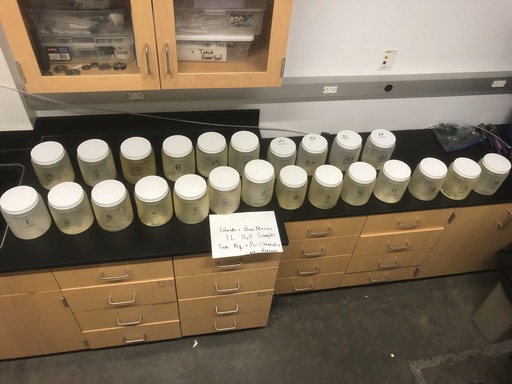Watchdogs are raising alarm over the presence of legacy contamination in Los Alamos, the historic birthplace of the atomic bomb and currently a hub for the production of nuclear weapons components. A retired professor from Northern Arizona University conducted tests on soil, water, and vegetation samples from Acid Canyon, revealing higher concentrations of plutonium compared to other publicly accessible sites he has studied over his decades-long career, even surpassing levels found near the former weapons plant at Rocky Flats in Colorado.
Although outdoor enthusiasts passing through Acid Canyon may not be at immediate risk, the professor, Michael Ketterer, emphasized the importance of state and local authorities warning people to avoid contact with water in the area, referring to it as an unrestricted zone with unusually elevated plutonium levels in soils and sediments, stating that it is a striking example of contamination in plain view. During a rainy period in July, Ketterer, in collaboration with Nuclear Watch New Mexico, collected samples as stormwater flowed through the canyon.
Jay Coghlan, director of Nuclear Watch, expressed concerns about the discovery of high plutonium levels in the heart of Los Alamos as the laboratory prepares to produce the next generation of plutonium pits for the national nuclear arsenal, emphasizing that Acid Canyon should have undergone more thorough cleanup efforts years ago. The cleanup at Los Alamos has faced significant delays, with substantial annual budgets allocated for plutonium pit production overshadowing the declining funds for addressing historical waste in the upcoming fiscal year.
Over the years, Acid Canyon, a tributary passing through San Ildefonso Pueblo lands to the Rio Grande, received liquid waste from nuclear research operations at Los Alamos. Despite cleanup efforts in the late 1960s and the land’s transfer to Los Alamos County in the following decades, recent findings by Ketterer have prompted the Energy Department’s Office of Environmental Management at Los Alamos to prepare a response.
Ketterer and Coghlan highlighted concerns about the continued spread of plutonium downstream, its absorption by plants, and the potential creation of contaminated ash in the event of wildfires. While the professor acknowledged that the issue cannot be entirely remedied, he emphasized the importance of making residents and visitors aware of the contamination, comparing the cleanup to trying to remove spilled salt from a shag carpet, noting the complexity of addressing such widespread contamination effectively.
